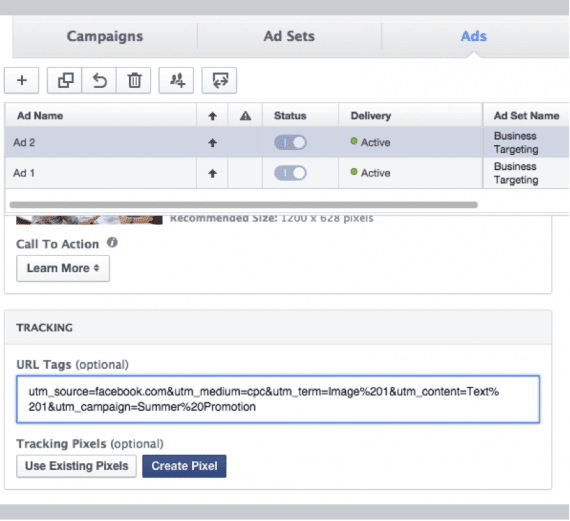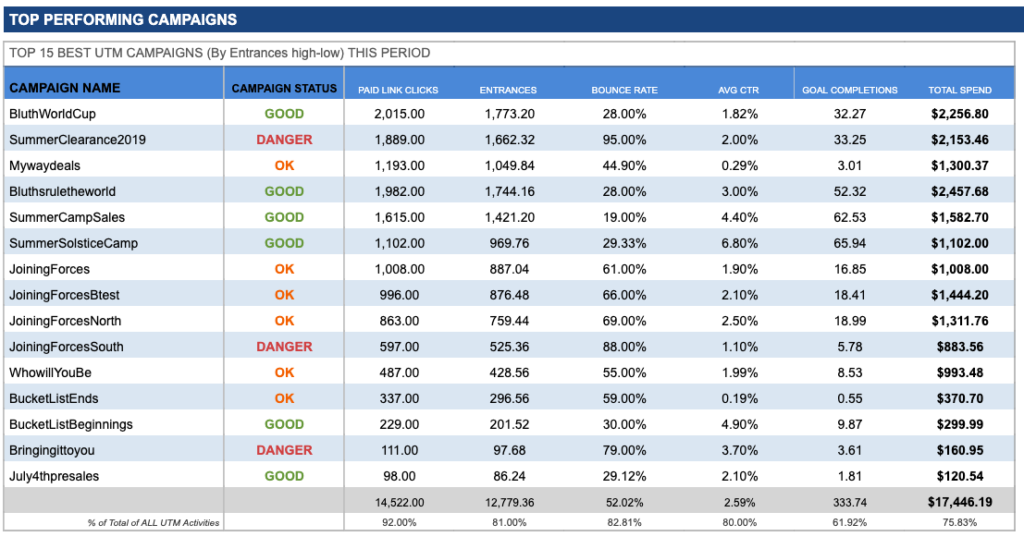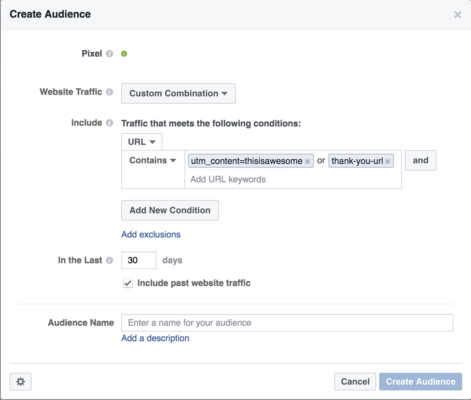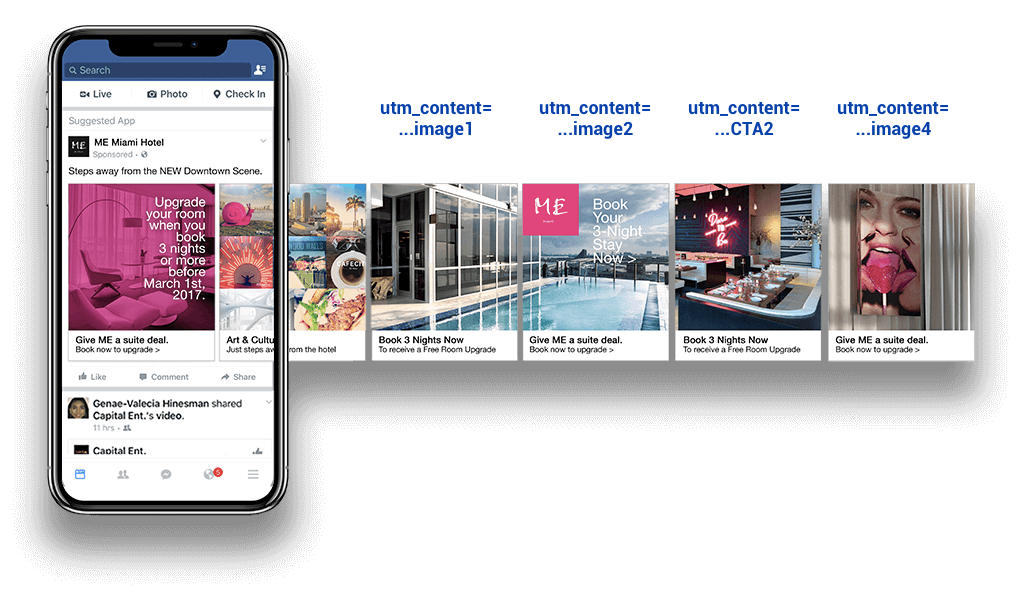Optimize your Facebook Ads with these 3 data-driven strategies (starting with a smart Facebook UTM builder)

If you’re leveraging Facebook advertising for lead generation or conversions, understanding the results of your campaigns can be challenging. In this article, we will outline three optimization tactics that will help you make data-driven decisions to increase your lead conversion rates.
Data-driven digital marketers usually cringe when they think of Facebook Ads Manager’s reporting if they’re trying to analyze last-click attribution and compare it with the Google Analytics reports. If your organization is using Facebook advertising and looking at obtaining results that generate sales but is struggling to understand the real results you are creating, you’re not alone.
I’ve seen way too many e-commerce businesses spend over $20,000 a month in Facebook advertising for lead gen to abandon their strategy because the revenue reported by Google Analytics was not even close to the one reported by Facebook. In this article, you will learn three very specific tactics that are about to change your advertising (or marketing) life (and help you make the best data-driven decisions).
Facebook Optimization tactic 1: Standardize your UTM protocol and use a Smart Facebook UTM builder
If you’re not applying UTM tags to your Facebook advertising traffic, it’s likely not being categorized correctly. Facebook traffic can often show up in google analytics as m.facebook.com/referral or facebook.com/referral or something similar without proper UTM tagging in place. So how do you set this up? Follow the steps below

When building an ad, under all of the creative is a tracking section that lets you add your URL Tag (also known as your UTM link).
Pro Tip # 1: Build your facebook UTM link using a smart facebook UTM builder
Best practices have proven that building a UTM link using the Facebook UTM builder or the Google Campaign URL builder is a big no no. Building your links through those forms puts you at an incredible disadvantage when it comes to analyzing your data because there’s no way to maintain control of your data integrity. What do I mean by this? One person can write the source as Facebook, another can write it as FB, another can write it as facebook, and so on. In the end, these are all listed as different sources in Google Analytics and give you a killer headache when you’re trying to analyze your data. Consequently, we recommend that you stop using those tools immediately and instead use a Smart UTM builder like our UTM Smart Manager.
This Smart UTM builder helps you standardize your UTM protocols so that you never have to worry about variability in how names are written. Consequently, this Facebook UTM builder, for example, will ensure that any facebook ad is always credited as source ‘facebook’ by enforcing strict naming conventions. With this level of standardization, you will now have a smart facebook utm builder that will conform to your standards and will guarantee data quality when it comes to analysis.
If you want to start understanding how your lead generation facebook efforts are impacting your website traffic, you can then go into Google Analytics or use the UTM Smart Manager dashboard.
In Google Analytics, you can navigate to the Acquisition section and select source/medium to view your data. Within this section, you’ll be able to choose both from the campaign or ad content as secondary dimensions; thus helping you understand the success at the ad level. While this data is great, we usually find that the picture painted is often incomplete. This is why we use the UTM Smart Manager dashboard for our analytics.
In the UTM Smart Manager, you just simply click on the Executive Dashboard to understand the campaigns that are performing best and those that are in danger. We love this view because it puts all of the different platforms’ data together to help us calculate ROI. This means we can view the Facebook ad spend, Google Analytics revenue, bounce rate, and ad ctr all in one place and in real time! It’s a facebook advertiser’s dream.

If you want even more detail, all you have to do is visit the UTM KPIs report tab and there you will view all of your created UTMs using the smart UTM builder. In that view, you will not just see all of the profitability KPIs from your UTM parameters (ie campaign name, etc), but you can also view results on a per platform basis (ie, Shares, likes, comments). Marketing Data folks like us love this view because it helps us determine whether the ad was really successful through a contextual lens of all of our facebook activities.
Facebook Optimization tactic 2: Create source-specific remarketing funnels
As you continue to add UTM parameters to your facebook ad, you are probably going to consider that lead to be of higher value in your funnel than leads generated from direct or organic traffic. Considering that you went out to find this person when they had zero intent in finding you, you should be able to understand which link drove that traffic to you. Consequently, we need to begin creating additional steps in your remarketing funnels to get even more touch points with visitors and leads from sources like facebook.
To do this, you should create a custom audience in Facebook based on your website visitors. Remember that utm_content parameter you wrote when you created your UTM link? Build the audience based on visitors who A (leads) hit your thank you URL and had the URL contenting utm_content=myadname and B (visitors) had a page visit containing utm_content=myadname but didn’t visit your thank-you URL. This combination can be done by creating a Custom Combination audience just like the image below:

Let’s summarize our progress so far: We starting building and using facebook UTM links properly in order to maintain our facebook data integrity and measure success from our Google Analytics report (not just relying on Facebook Ad Manager reporting). Then, we created a remarketing funnel to better understand how our higher value leads or visitors from facebook ads were behaving. Running AB tests from one on should be a breeze for you!
Facebook Optimization tactic 3: Creating Carousel Ad Storytelling
If you’re into agile marketing practices at all (and understand the value in its execution), you need to be aware of carousel ad storytelling. Carousel Ads are extremely useful, especially for e-commerce businesses, who typically want to showcase multiple products or need to test several images (or CTAs) to tell a story and optimize their ad spend effectiveness. Do you think UTMs would be useful here? Absolutely!

If this doesn’t make you giddy, then we are cut from different cloths! Creating carousel ads is essentially helping you follow agile marketing philosophies where you’re testing different ad experiences with multiple images, descriptions, and CTAs so that you can learn which combination of creative drives the biggest conversions or engagements with your brand. Each one of these can link to their own destination URL (or UTM link). This means that by defining your utm content as =…carouselad_image1 or carouselad_CTA2, we can begin to understand:
- what features or images does this audience find most compelling?
- How far into my carousel ads are people getting before clicking?
- is there a particular order of images/products/ctas and descriptions that leads to the highest ROI
In following this process, we convert a creative team that is constantly analyzing data to find the best path-to-conversion (and cheapest). Now, we can start using all sorts of optimization tactics that can create extremely meaningful results for any business.
If you’re trying to use Facebook ads to create leads and conversions from your cold traffic, you need to consider optimization as part of your strategy. This is a great way to get it done and I hope you try these strategies. I promise, they will make your life significantly easier and will hopefully gain you even more marketing dollars for you to spend.
